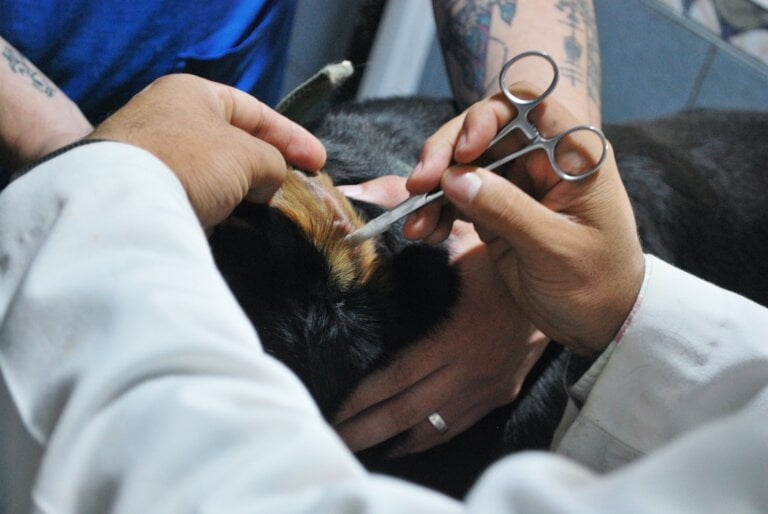Personalized Care: Identifying Suitable Candidates for Manual Instrument Ear Wax Removal
Ear wax, also known as cerumen, is a natural substance produced by glands in the ear canal. It plays a crucial role in protecting the ear from dust, foreign particles, and microorganisms. However, excessive ear wax buildup can lead to discomfort, hearing impairment, and other ear-related issues.
Understanding Ear Wax Buildup
Before we delve into identifying suitable candidates for manual instrument ear wax removal, let’s understand how ear wax buildup occurs. The production of ear wax is a natural and ongoing process for most individuals. Usually, the ear wax gradually moves from the ear canal to the outer portion of the ear, where it dries up and falls off.
However, certain factors can disrupt this process, leading to excessive ear wax accumulation. These factors may include:
-
Ear Canal Shape: People with narrow or curved ear canals may face a higher risk of ear wax buildup as it becomes challenging for the wax to exit naturally.
-
Overproduction of Wax: Some individuals produce more ear wax than others, which can result in a faster buildup.
-
Improper Ear Cleaning: Using cotton swabs, hairpins, or other objects to clean the ears can push the wax deeper into the ear canal, causing it to accumulate.
It is important to note that while ear wax buildup is common, not everyone experiences symptoms or requires intervention. Some individuals have self-cleaning ears, where the wax naturally migrates out of the ear without causing any issues. However, for those who experience discomfort or hearing impairment due to excessive wax accumulation, manual instrument ear wax removal may be a suitable solution.
Suitability for Manual Instrument Ear Wax Removal
While manual instrument ear wax removal can be effective, it is not suitable for everyone. Several factors determine whether an individual is an appropriate candidate for this procedure. These factors include:
1. Severity of Wax Buildup
The severity of the ear wax buildup plays a crucial role in determining the suitability for manual instrument ear wax removal. Mild to moderate cases can often be treated with this method. However, if the wax buildup is severe or impacted, alternative methods such as irrigation or suction may be necessary.
In cases of severe wax buildup, manual instrument ear wax removal may not be effective or safe. The impacted wax can be deeply lodged in the ear canal, making it difficult to reach and remove with instruments alone. In such situations, it is important to seek professional help to prevent further complications.
2. Presence of Ear Infections or Inflammation
Individuals with active ear infections or inflammation should avoid manual instrument ear wax removal. The procedure can further irritate the ear canal, worsening the condition or causing pain. In such cases, it is essential to consult a healthcare professional for appropriate treatment.
Ear infections or inflammation can make the ear canal sensitive and prone to injury. Attempting manual instrument ear wax removal in such cases can lead to complications and delay the healing process. It is crucial to prioritize the health and well-being of the individual by seeking medical advice before proceeding with any ear wax removal method.
3. Ear Anatomy
The anatomy of the ear, specifically the ear canal, is another crucial factor to consider. Some individuals may have anatomical variations, such as a narrow or curved ear canal, making it challenging to perform manual instrument ear wax removal safely and effectively. In such cases, alternative methods may be recommended.
Individuals with narrow or curved ear canals may have a higher risk of complications during manual instrument ear wax removal. The specialized tools used in this procedure may not be able to navigate the curves or reach the wax effectively. Therefore, alternative methods like microsuction or irrigation may be more suitable for individuals with specific ear anatomy.
4. History of Ear Surgeries or Injuries
Individuals with a history of ear surgeries or injuries should exercise caution when considering manual instrument ear wax removal. Scar tissue or structural changes resulting from previous procedures or injuries can make the procedure more challenging and increase the risk of complications.
Scar tissue or structural changes in the ear canal can alter its shape and make it difficult to maneuver instruments during ear wax removal. It is important to inform the healthcare professional about any past surgeries or injuries to ensure the safest and most effective method is chosen for ear wax removal.
5. Patient Comfort and Cooperation
Patient comfort and cooperation are vital during manual instrument ear wax removal. The procedure may cause mild discomfort or tickling sensations. It is crucial for individuals to be able to sit still and follow instructions during the process. Young children or individuals with certain conditions that prevent them from cooperating may require alternative methods.
Manual instrument ear wax removal requires the individual to remain still and follow the healthcare professional’s instructions. This ensures the safe and accurate removal of the wax without causing any harm to the ear canal. If an individual is unable to cooperate or sit still, alternative methods like microsuction or irrigation may be more suitable to minimize discomfort and ensure successful wax removal.
6. Professional Assessment
Ultimately, the suitability for manual instrument ear wax removal should be determined by a qualified healthcare professional. They can assess the individual’s specific situation, consider their medical history, and make an informed decision regarding the most appropriate method of ear wax removal.
A healthcare professional, such as an ear, nose, and throat specialist or an audiologist, is trained to evaluate the individual’s ear condition and determine the best course of action for ear wax removal. They will consider factors such as the severity of wax buildup, presence of infections or inflammation, ear anatomy, previous surgeries or injuries, and patient comfort to provide personalized care and ensure the safest and most effective wax removal method is chosen.
Alternative Methods for Ear Wax Removal
If an individual is not a suitable candidate for manual instrument ear wax removal, various alternative methods can be considered. These include:
- Irrigation: This method involves flushing the ear canal with warm water or saline solution to dislodge and remove the ear wax. It is often suitable for individuals with soft or moderate wax buildup.
Irrigation is a common alternative method for ear wax removal. Warm water or saline solution is gently introduced into the ear canal using a specialized syringe or irrigation device. The fluid helps to soften the wax and flush it out of the ear. This method is generally safe and effective for individuals with soft or moderate wax buildup and does not require the use of manual instruments.
- Suction: Suction methods utilize gentle suction to remove the ear wax from the ear canal. This method is commonly used for individuals with more severe or impacted wax.
Suction-based methods involve using a vacuum-like device to gently suction the ear wax out of the ear canal. This method is often suitable for individuals with more severe or impacted wax, where manual instrument removal may not be effective. Suction devices used for ear wax removal are designed to provide controlled and safe suction without causing any damage to the ear.
- Ear Drops: Ear drops, containing substances like hydrogen peroxide or saline, can be used to soften the ear wax, making it easier to remove naturally or through other methods.
Ear drops are a non-invasive method of ear wax removal. These drops usually contain substances like hydrogen peroxide or saline, which help to soften the wax and facilitate its natural removal. Ear drops can be used as a standalone treatment or in combination with other methods like irrigation or suction to enhance wax removal.
- Microsuction: Microsuction involves using a specialized device to precisely and gently suction out the ear wax. It is considered a safe and effective method even for individuals with narrow or curved ear canals.
Microsuction is a highly precise and controlled method of ear wax removal. It involves using a microscope and a suction device to carefully extract the wax from the ear canal. This method is particularly suitable for individuals with narrow or curved ear canals, as the healthcare professional can visualize the wax and perform the removal with precision and minimal risk of complications.
Conclusion
Personalized care is crucial when it comes to identifying suitable candidates for manual instrument ear wax removal. Factors such as the severity of wax buildup, presence of ear infections or inflammation, ear anatomy, history of ear surgeries or injuries, patient comfort and cooperation, and professional assessment all play a significant role in determining the appropriateness of this method.
If manual instrument ear wax removal is not suitable, alternative methods like irrigation, suction, ear drops, or microsuction can be utilized. Remember, it is always best to consult a qualified healthcare professional who can evaluate individual circumstances and provide the most appropriate and personalized care for ear wax removal.
By considering the unique needs and characteristics of each individual, healthcare professionals can ensure safe and effective ear wax removal, promoting ear health and overall well-being. It is important to prioritize the expertise and guidance of qualified professionals in order to maintain the highest standards of care for individuals seeking ear wax removal services.
FAQ
-
Who is a suitable candidate for manual instrument ear wax removal?
Manual instrument ear wax removal is suitable for individuals with mild to moderate wax buildup who do not have active ear infections or inflammation, have normal ear anatomy, do not have a history of ear surgeries or injuries, can cooperate and sit still during the procedure, and have been assessed by a qualified healthcare professional.
-
What should individuals with severe wax buildup or impacted wax do?
Individuals with severe wax buildup or impacted wax may require alternative methods such as irrigation or suction. It is important to seek professional help to prevent further complications.
-
Can individuals with ear infections or inflammation undergo manual instrument ear wax removal?
Individuals with active ear infections or inflammation should avoid manual instrument ear wax removal as it can worsen the condition or cause pain. It is essential to consult a healthcare professional for appropriate treatment.
-
Are there alternative methods for ear wax removal?
Yes, alternative methods for ear wax removal include irrigation, suction, ear drops, and microsuction. These methods can be used depending on the severity of wax buildup, individual circumstances, and professional assessment.







